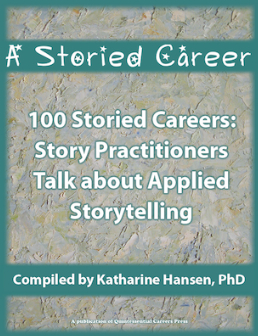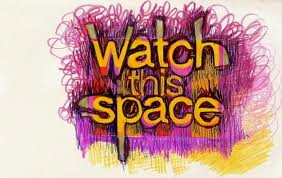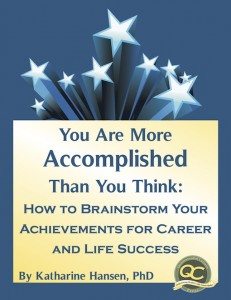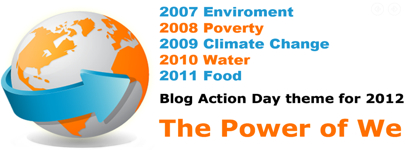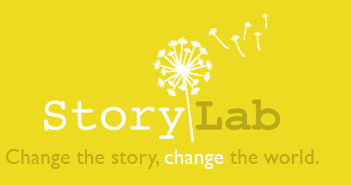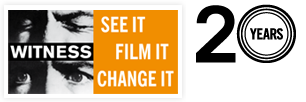I’ve completed Q&A interviews with 100 story practitioners here on A Storied Career. Note that if you check these out, the formatting is kind of funky because I haven’t fully transferred them to my new WordPress platform. Also look soon for an update on my compilation of the 100 Q&As.
 Recently, one of the interviewees, Kimberly Burnham, contacted me about the possibility of contributing to an anthology she’s doing on the theme of “Bicycling for Food.” I’m seriously considering contributing the story of my 2012 Summer Sunrise bike rides. I undertook them to take advantage of how early the sun rises in my northern latitude — to see and photograph incredible sunrises amid the beautiful scenery of Eastern Washington. They were also tied to food in that I was working on losing weight; interestingly, my weight loss slowed during the eight weeks of the bike rides because I wasn’t eating enough to sustain biking up the steep hills here, and my body went into survival mode. The photo shows my shadow at a mid-point in what was an eventual 85-lb. weight loss.
Recently, one of the interviewees, Kimberly Burnham, contacted me about the possibility of contributing to an anthology she’s doing on the theme of “Bicycling for Food.” I’m seriously considering contributing the story of my 2012 Summer Sunrise bike rides. I undertook them to take advantage of how early the sun rises in my northern latitude — to see and photograph incredible sunrises amid the beautiful scenery of Eastern Washington. They were also tied to food in that I was working on losing weight; interestingly, my weight loss slowed during the eight weeks of the bike rides because I wasn’t eating enough to sustain biking up the steep hills here, and my body went into survival mode. The photo shows my shadow at a mid-point in what was an eventual 85-lb. weight loss.
Here’s the story of Kimberly with a new Q&A about the book, and the accompanying biking project. Be sure to note the end of the Q&A if you have interest in contributing to the new anthology and be aware of the Feb. 10 deadline to let Kim know you want to contribute:
Known as The Nerve Whisperer, Kimberly Burnham, PhD (Integrative Medicine) is the author of Our Fractal Nature, a Journey of Self-Discovery and Connection, Live Like Someone Left The Gate Open, and the forthcoming book, Harnessing the Placebo Effect, It Is Not What you Think, It Is What You Expect.
This spring she is editing an Amazon Kindle anthology, Bicycling for Food. and then setting off across the US with Hazon, a sustainable agriculture and food justice non-profit. If YOU would like to be one of the 30 or so authors in Bicycling for Food, contact Kim and share your story of how bicycling, the natural environment and food intersect in your life.
Read Kim’s earlier interview.
Why are you combining bicycling and food in your upcoming anthology, Bicycling For Food, Nourished by Beauty?
Obesity costs the United States roughly $150 billion dollars. Imagine if we could put that money towards feeding the 50 million Americans, including 16 million children, who don’t know where their next meal will come from.
Imagine if everyone who is overweight could exercise more, bicycle and enjoy the beauty of this country fully. Balancing food and exercise solves several serious problems.
Medical costs for people who are obese are $1,429 higher than those of normal weight and we are talking about 60 million Americans, 20 years and older who are obese.
Nearly 24 billion dollars will be spent on obesity related health issues in Pennsylvania, Ohio, Illinois and Michigan, four of the 14 states I will be riding my bicycle through, Summer 2013.
My grandfather died of diabetes. My uncle lost his leg to the disease shared by 18 million Americans. Avoiding their footsteps at age 55, I enjoyed a thousand shades of green in the Connecticut Berkshires in 2012, raising money for sustainable living with Hazon, which means Vision in Hebrew.
As I crested the last hill, my bicycle odometer read 53 miles. I never expected to be able to finish the ride. The experience unleashed my inner “I can do it” activist. Less than a month later, five pounds lighter, I rode 71 miles. Yes, I was sore but I could feel the brilliant beauty in my health and surroundings. Now, I can imagine long cross-USA days that begin with dipping my bicycle wheels in Seattle’s Pacific Ocean and setting off on a 3,300 mile journey to Washington, D.C., raising $10,000 and sharing magnificence with everyone I meet. To follow my 2013 summer bicycle ride visit this site.
I look forward to talking to people in towns like Lake Village, IN; Xenia, OH; Coshocton, OH; Ohiopyle, PA and Winchester, VA, as I ride my bicycle and take in the sensations and nourishing beauty of this country.
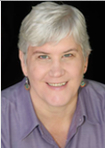 Who benefits from Sensational Medicine?
Who benefits from Sensational Medicine?
The aim of Sensational Medicine is healing the sensory system with new activities. You know the saying, “you can’t teach an old dog new tricks. But remember the second half?
“The fastest way to become an old dog? … Stop learning new tricks.” So this year learn something new, a new trick, observe a new sensation, or notice something old in a new way. These are the ways to improve your brain health, your nervous system function, and decrease your pain while improving the quality of your life and the way you move and contribute to your community. Do something unique today to feel better, accomplish your goals and bring a smile to your face.
Pick something up every day and notice the shape, color, texture, sound, taste, smell, temperature, and consistency. Notice how the parts make up the whole and how it is connected to its surroundings. How is it similar or different from the other things around you? What changes in you when you truly see your natural environment and the people around you.
This is an exercise that help you to see others, your connections and relationships while noticing your surroundings. Like bicycling, these activities connect you to the cycles and rhythms of life.
What is an easy exercise for cyclists to improve their vision?
I developed an easy exercise for vision improvement after seeing a pair of Nike goggle designed to speed up an athlete’s reaction times.
I call it: The Rhythm of Blinking
Do this for 2-5 minutes on your bicycle or while walking or even just sitting. Then notice how the colors around you pop more and edges seem clearer.
Blink your eyes while looking around. Look for a specific color, (ie) notice everything that is red in the area. Do this for a minute or so. Stop doing this exercise if as any point if feels unsafe.
Then repeat with a new question in your mind. For example, “What do I see that is round? or “How many people with blue clothes do I see?”
Notice what changed about your balance, your vision, the brightness of colors, etc. Write some notes.
The blinking exercises are like pushups for the eyes. You can hear more of my story and these exercises in my interview at the 2012 Consciousness Raising Summit.
What do you expect to see from your bicycle saddle this summer?
When I was eight years old, my father helped me catch a blue morpho butterfly in Colombia. Its iridescent wings were the most beautiful things I had ever seen. Later I became a professional photographer, then one day it all changed in an ophthalmologist’s office. In his white coat with impressive degrees on the wall, he told me I had a genetic condition of the eyes and that I should consider my life in case I become blind. He said, “Kim, it is genetic so there is nothing you can do.”
Fortunately I found my way to massage school, a profession where you don’t have to be able to see to practice. From there I learned acupressure, craniosacral therapy, nutrition, Matrix Energetics, and more and today at 55 have the best vision of my life.
I can almost imagine the colors, shapes and textures I will see as I ride through towns with image evoking names like Skykomish, WA; Soap Lake, WA; Pinehurst, ID; Big Timber, MT; Bowman, ND; Lemmon, SD; Hutchinson, MN; and Pepin, WI.
I have an undergraduate degree in zoology, and while my focus was aquatic and marine biology, I studied trees, birds, insects and wildlife management. I look forward to seeing hawks, pelicans, blue jays, as well as the stark black and white of magpies.
Who knows; I might even see a bear, a moose or a stonefly.
I will be posting pictures and describing the sensations I experience along the way. You can contribute a few dollar, sign up to ride with me or follow along on my Hazon page.
What is your interest in Parkinson’s Disease and bicycling?
In 2006, I completed my PhD in integrative medicine. My dissertation focused on the use of hands-on (Integrative Manual Therapy and CranioSacral Therapy) approaches to decrease the symptoms of Parkinson’s disease. I read through lots of research showing the benefits of exercise for people with Parkinson’s. Exercise can decreases tremors, while improving stiffness and pain. It can help you sleep better, but there is something special about bicycling.
In 2011, Anke H. Snijders, MD, and colleagues published in the Journal of Movement Disorders, saying, “Patients with freezing of gait (FOG) have episodic problems with generating adequate steps. [Problems initiating and taking steps.] This phenomenon is both common and debilitating in patients with Parkinson’s disease (PD) or atypical parkinsonism. We recently presented a video case of a patient with longstanding Parkinson’s disease and severe freezing of gait, who showed a remarkably preserved ability to ride a bicycle.”*
A 2010 New York Times article entitled, “Cycling Provides a Break for Some With Parkinson’s,” described one man’s experience in this way, “We helped him mount the bike, gave him a little push, and he was gone, Dr. Bloem said. He rode, even making a U-turn, and was in perfect control, all his Parkinson’s symptoms gone. Yet the moment the man got off the bike, his symptoms returned. He froze immediately, unable to take a step.”
More recent research points to the possibility that not only does bicycling provide a break from symptoms but also delays deterioration.
I am currently working with a number of clients in my private practice who are maintaining quality of life or seeing improvements in their symptoms of Parkinson’s, Huntington’s disease, and multiple sclerosis.
What should cyclists do if they want to participate in your upcoming book?
There is no cost to participate, and funds raised through anthology sales will be donated to Hazon, a non-profit serving people in the sustainable agriculture field and connecting people to where their food comes from.
The eBook will include 30 or so bicyclists, including Diana Black, author of The Organic Cyclist blog; Victoria Carmona of A Caring Touch Massage and Matrix Energetics; Adrienne Winton of Hazon Cross USA Program Director; Kathy Hansen, a Storied Career and initiator of Sunrise Bike Rides; and more. Please contact me if you are interested in participating.
Some of the topics and ideas that will come through in the book are: How bicycling and sustainable agriculture or food justice has changed my life. Bicycling helps me get out into the natural environment and helps connect me to the green world, farms and fresh fruits and vegetables. When I bicycle, I enjoy the beauty in the world, and become more conscious of my surroundings and the resources and opportunities I have available to me. Obesity and hunger are connected. What I see as beautiful I preserve, enjoy and keep safe for others in my community and the next generation.
The purpose of the book is to share stories that inspire readers to connect and preserve the natural environment, eat healthier and bicycle or exercise. Each story will share an individual’s experience as well as ways the reader can live a healthier life or steps they can take to ensure healthy food is available for generations to come.
For similar projects I have worked on, see my Amazon Author’s Page.
If you are interested in participating, let me know by Feb 10 or so and then send the following to theburnhamreview AT juno.com by May 15, 2013 (Publication on Amazon Kindle for June 2013).
-
- A well edited personal story 500-3000 words attached as a Word document.
- A 100-200 word bio with a weblink to your site or somewhere you want readers to go after reading your chapter. (each story will have the authors name under the title and the short bio and weblink at the end)
- Title the emails “Bicycling for Food eBook.”
I look forward to hearing your story and how you are changing the world.
*Snijders, A. H., I. Toni, et al., (2011). “Bicycling breaks the ice for freezers of gait.” Mov Disord 26(3): 367-371.
 “What authentic storyline lies at the core of your professional identity, strengths and values?” is the question asked on the page describing the webinar. “A Hero? A Jester? An Innocent? A Revolutionary?” The webinar will offer participants the opportunity to explore their storyline.
“What authentic storyline lies at the core of your professional identity, strengths and values?” is the question asked on the page describing the webinar. “A Hero? A Jester? An Innocent? A Revolutionary?” The webinar will offer participants the opportunity to explore their storyline.

